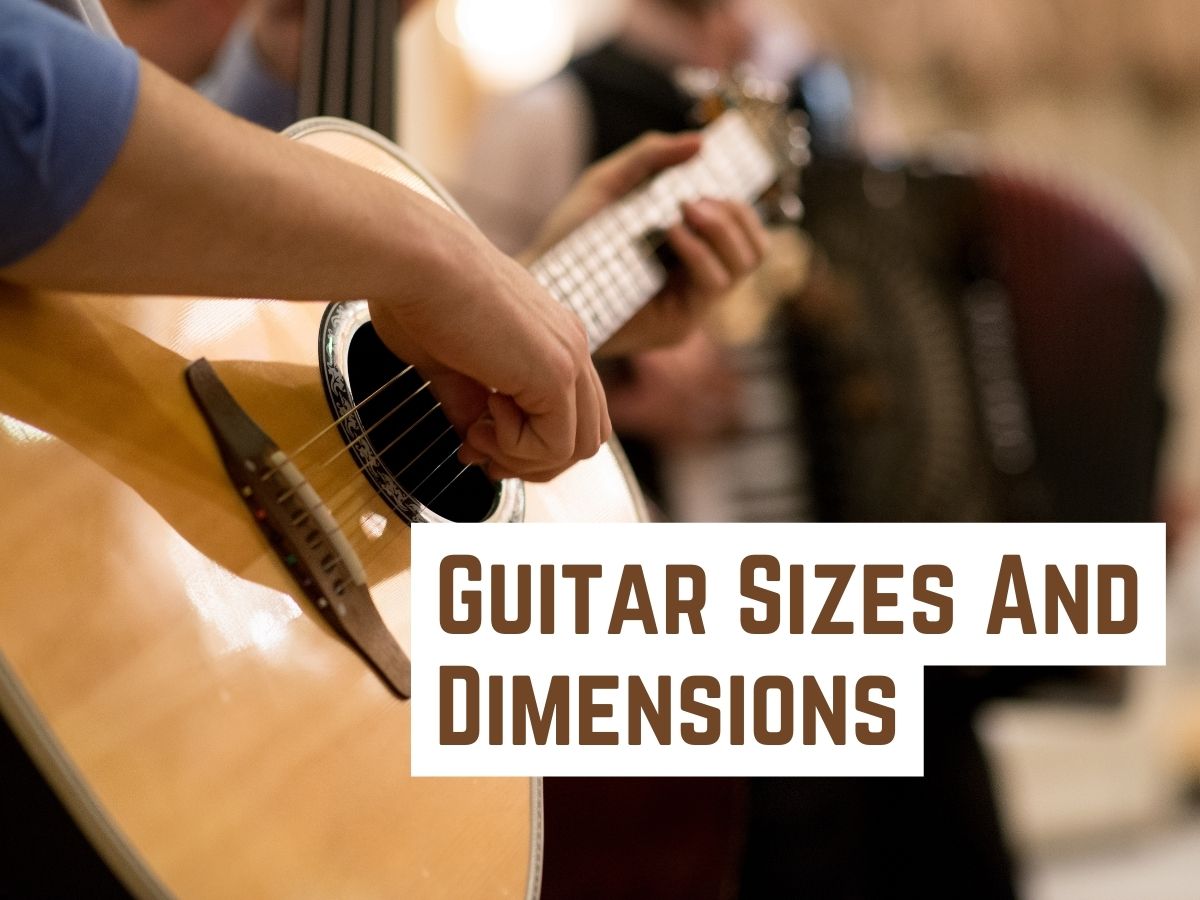
Whether you have just developed an interest in acoustic guitars or you have been playing the instrument for years, at some point you will face the challenge of choosing the right guitar size for you. To better understand which sizes are appropriate for your needs and style, you should follow our short guide.
From defining different acoustic guitar sizes, along with measurements and general characteristics, our guide will help you narrow down the choice for the perfect guitar for your unique situation.
Guitar Sizes
There are many guitar models to choose from and there are some factors you need to consider when choosing the right acoustic guitar. If price or cost is a factor, you may prefer an inexpensive guitar model. But if size matters the most for you, then this guide will help you.
Acoustic guitars come in a variety of shapes and sizes and might even feature some unusual materials, tonewoods, and sounds. Yet, you will find that most acoustic guitars fall into one of the following acoustic guitar sizes.
Concert and Grand Concert
Concert and grand concert guitars are usually a smaller size. Are you looking for something that is comfortable to play for hours, easy to handle, and delivers a reliable performance?
This is the guitar size for you. In concert guitars, you will typically find a lower bout of 13 ½ inches, while grand concerts are slightly larger around 14 – 14 ¼ inches. You can expect a bright sound and a punchy mid-range performance.
Auditorium and Grand Auditorium
Do you need something that provides a fuller and more balanced sound? How about a narrower neck and a higher range?
Auditorium guitars are medium-sized guitars that are excellent for performances where the acoustic guitar takes center stage. While not as comfortable as concerts, due to their 16-inch lower bout, the narrow waist still offers you comfort and playability.
Dreadnought
Perhaps the most common and popular acoustic guitar size, the dreadnought is as mainstream as it gets in the world of acoustic guitars. Are you looking for a powerful, driving sound that fills the room or a concert hall?
Dreadnoughts pack a punch due to their square body and wide waists. On a dreadnought, you will usually find a 15-inch lower bout and a 14-fret neck.
Jumbo
Are you looking for that deep, booming sound and energetic performance in the lower range? Perhaps you are a fan of the country, cowboy-style acoustic guitars. The jumbo size is where you should be shopping.
These acoustic guitars feature a large resonance box, usually around 17 inches at the lower bout, and produce a sound that quickly fills the room with bass and warmth. This size is lumpy to carry around and not as comfortable to play, unless you are sitting down.
Travel Size and Mini-Acoustics
Are you looking for a guitar that is easy to carry around and take on trips? Perhaps you are shopping for a child who is learning to play the instrument. In these cases, size matters. A small guitar is perfect for certain situations.
Travel size guitars are a hit among traveling musicians and enthusiasts. You will find that they have much smaller resonance boxes that barely protrude from the neck, compared to full-sized models. Mini acoustics are small guitars at ¾ scale and usually have 18 frets.
It is essential to note that different brands use different sizings, so use these sizes as a general guide, not an absolute rule. Also, there might be signature shapes and sizes that certain brands feature that you will not find in other brands and models. A perfect example of this is Martin Guitar size chart .
A brand that is famous for having numerous acoustic guitar sizes and shapes (and even electric ones) is Taylor Guitars. From the Baby, Big Baby, GS Mini, Grand Concert, and all the way to Grand Auditorium, Grand Pacific and Grand Symphony. If there is a guitar size or shape you are looking for, Taylor Guitars probably has it.
Acoustic Guitar Sizes And How It Affects Sound
You might have noticed that certain guitar sizes affect the type of sound that is produced. A general rule is that the bigger the resonance box, the fuller and deeper sound you can expect. On certain occasions when the acoustic guitar takes the front stage in a live performance, chances are that it will have a larger body so that it can produce a fuller and more defined sound.
Yet, don’t get caught in the trap of believing that size is everything. The quality of the materials, craftsmanship, and design play a critical role in the way a guitar sounds. Have you ever been surprised by the way a guitar sounds, despite its smallish size? You are not alone.
